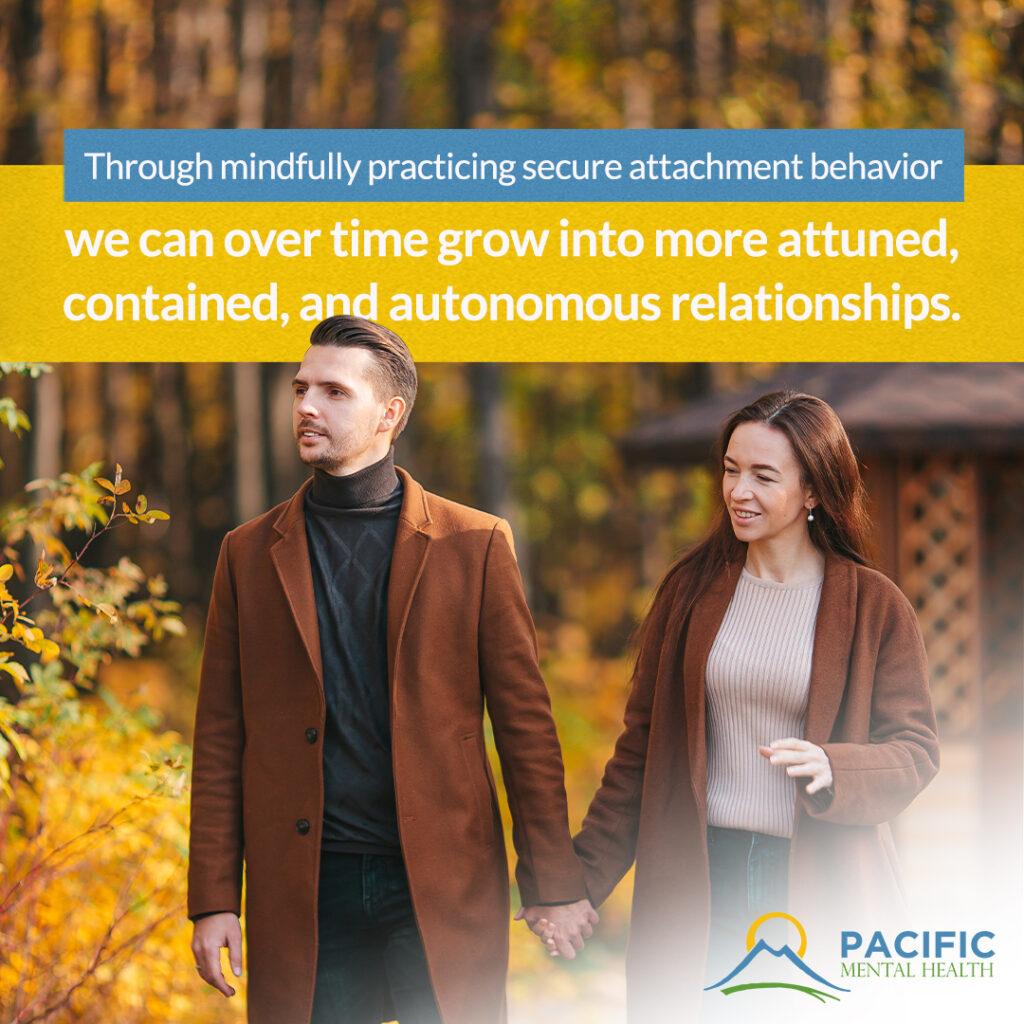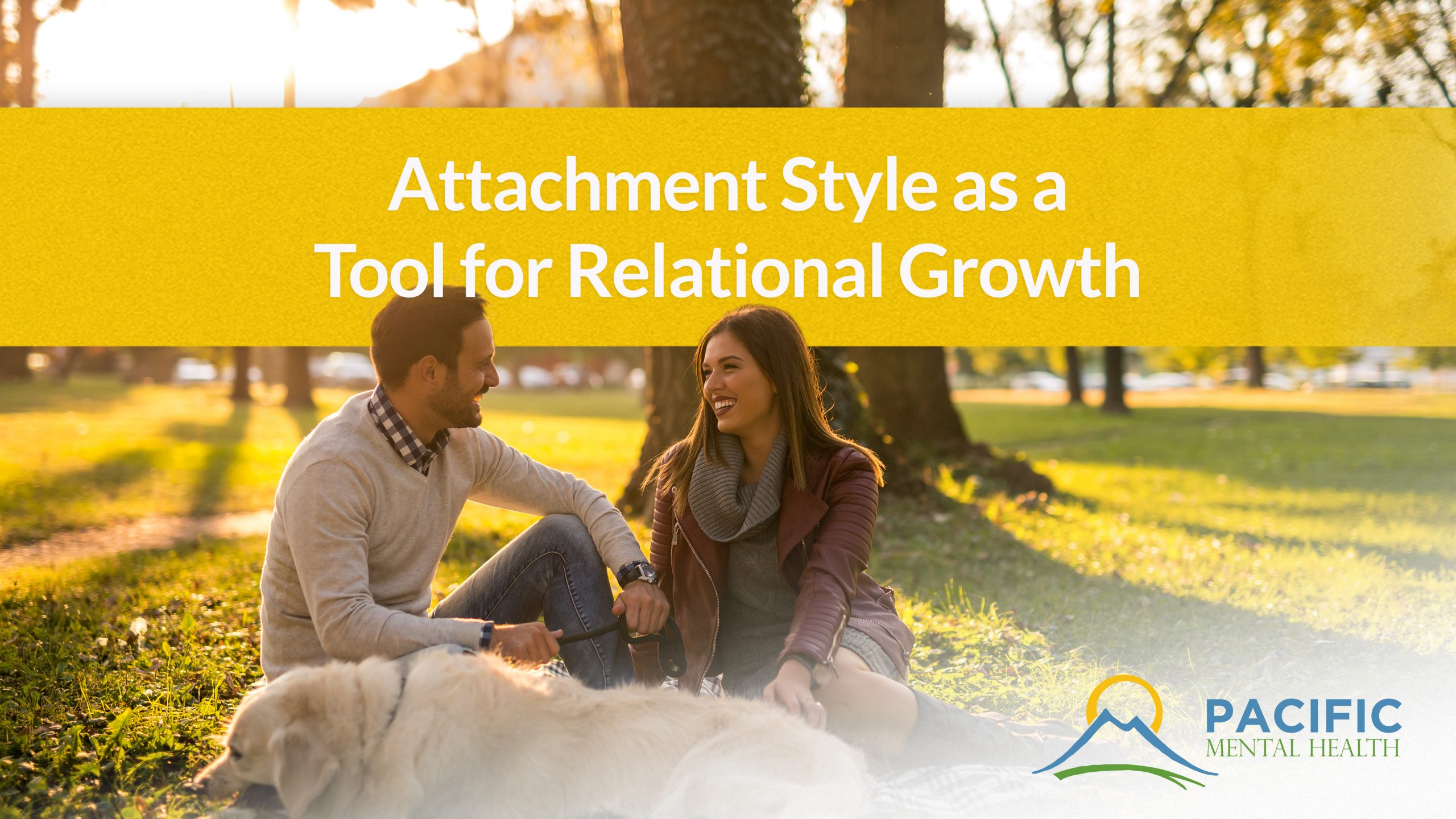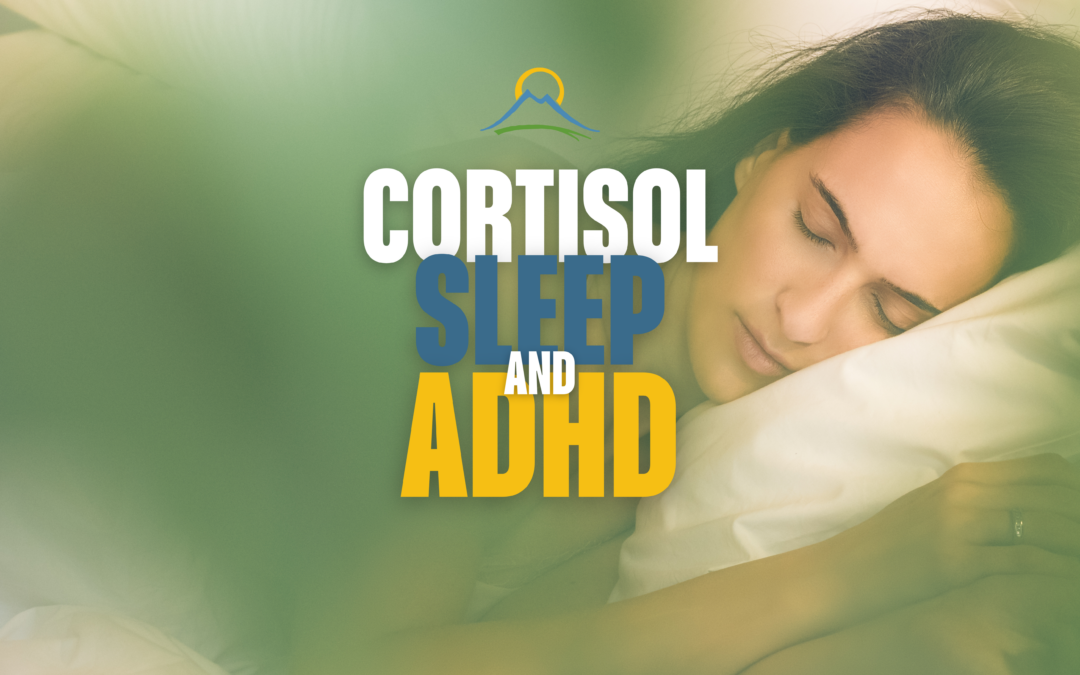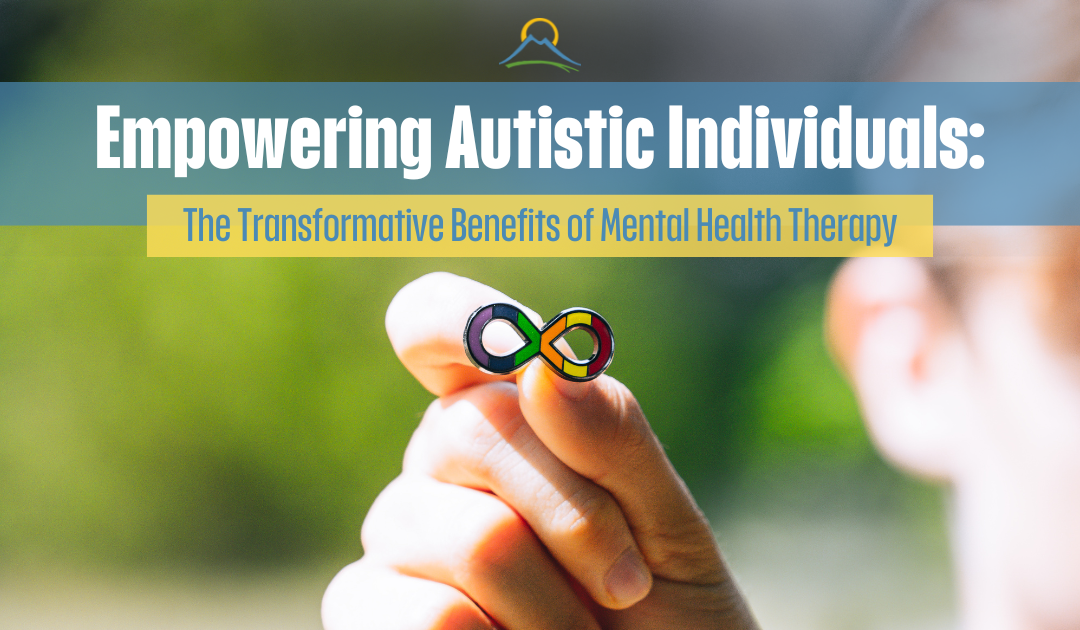
Have you ever wondered why you may be reacting or connecting to a person differently than a friend or sibling? Our minds automatically process interpersonal relationships through attachment patterns. As infants, we unconsciously learn how to modify our behavior in order to receive effective attunement from our parents. We read our parents’ reactions to our communication and modify our behavior to get our needs met. This is a very intuitive way of surviving infanthood. In the process of surviving, repeated exposure to our parents’ form attunement becomes ingrained neurologically as a pattern that over a lifetime helps us determine how to navigate other social interactions. There are four attachment styles we may intuitively lean toward: secure attachment, avoidant attachment, ambivalent attachment, and disorganized attachment.
Secure Attachment
Someone with secure attachment experienced a caregiver who offered fairly consistent attunement and containment to the child’s emotions while also maintaining the child’s autonomy. Adults with secure attachment have a balanced perspective, not overidealizing a person, event, or thing, rather they see the grey or complexity within experiences. Securely attached people also experience significant emotional relationships with friends, family, or romantic partners, while being able to be autonomous from others (Siegel, 2012). Relationships for securely attached people “tend to have long, stable, and satisfying relationships characterized by high investment, trust, and friendship” (Schachner, Shaver, & Mikulincer, 2003).

Avoidant Attachment
Someone with avoidant attachment experienced a caregiver who appeared emotionally distant, neglectful or rejecting. Adults with avoidant attachment believe that attachments are unimportant. There is a lack of connection to the emotional aspect of the relationship. Overall, there is detachment or dissociation from emotions and affect (Siegel, 2012). People with avoidant attachment are less interested in the romantic factor in relationships, disinterested in long-term relationships, experience high frequency of breakup, low intimacy, and “their love style is characterized by game playing” (Schachner, Shaver, & Mikulincer, 2003).
Ambivalent Attachment

Someone with ambivalent attachment, also called anxious attachment, experienced a caregiver who offered inconsistent or intrusive attunement and containment. Due to this style of engagement, the infant would be confused with how to express themselves. Adults with ambivalent attachment experience “simultaneously a powerful wish for closeness and at times a disabling fear of losing it” (Siegel, 2012). In relationships, an ambivalently attached person experiences fear, anxiety, anger, and disappointment, as they struggle to regulate emotions (Siegel, 2012). Romantic partnerships consist of high anxiety, low avoidance, hypervigilance, preoccupation or obsession with the partner, dissatisfaction with relationships, high frequency of breakups, and greater need for romantic intimacy (Schachner, Shaver, & Mikulincer, 2003).
Disorganized
Disorganized attachment, also called fearful attachment, is developed from childhood with high levels of trauma, abuse, or grief. Due to the chaos of the caregiver’s state of being the infant is unsure how to react. Trauma in itself does not fully contribute to the attachment style. Rather, it is a combination of trauma, the unreliability of the caregiver, and lack of resolution of emotion. In adulthood disorganized attachment shows up as explosive and constant changing states of emotion and behavior (Siegel, 2012). Disorganized attachment style is essentially a combination of both avoidant and ambivalent attachment. People with disorganized attachment are preoccupied with the relationship, but their behaviors avoid intimacy (Schachner, Shaver, & Mikulincer, 2003).
The Basic Attachment Styles
This of course is only the basic descriptions of the attachment styles. Each person has a tendency to naturally swing toward one common attachment style. However, it is important to remember that these categories are not definitive, nor inflexible. Humans are complex beings, with many factors impacting how we behave and engage with people. Therefore, we may experience one form of attachment style with a romantic partner, while a different attachment style may occur with friends or family. I recommend using attachment styles as a guide for ways you may want to move toward more healthy, secure relationships, rather than a diagnostic. Consider how a relationship in your life may be dissatisfactory or disruptive and how attachment style may be playing a role. Through mindfully practicing secure attachment behavior we can over time grow into more attuned, contained, and autonomous relationships.
References
Schachner, D. A., Shaver, P. R.. and Mikulincer, M. (2003). “Adult attachment theory, psychodynamics, and couple relationships.” In S. M. Johnson and V. E. Whiffen (Eds.) Attachment processes in couple and family therapy. Guilford Press.
Siegel, D. J. (2012). The developing mind: How relationships and the brain interact to shape who we are, 2nd ed. Guilford Press.
Schedule an appointment with a trained mental health care professional at Pacific Mental Health for treatment coping with the the challenges that come with relationships or other mental health concerns . You can also read more articles about mental health topics written by Pacific Mental Health counselors and therapists on our blog.








0 Comments